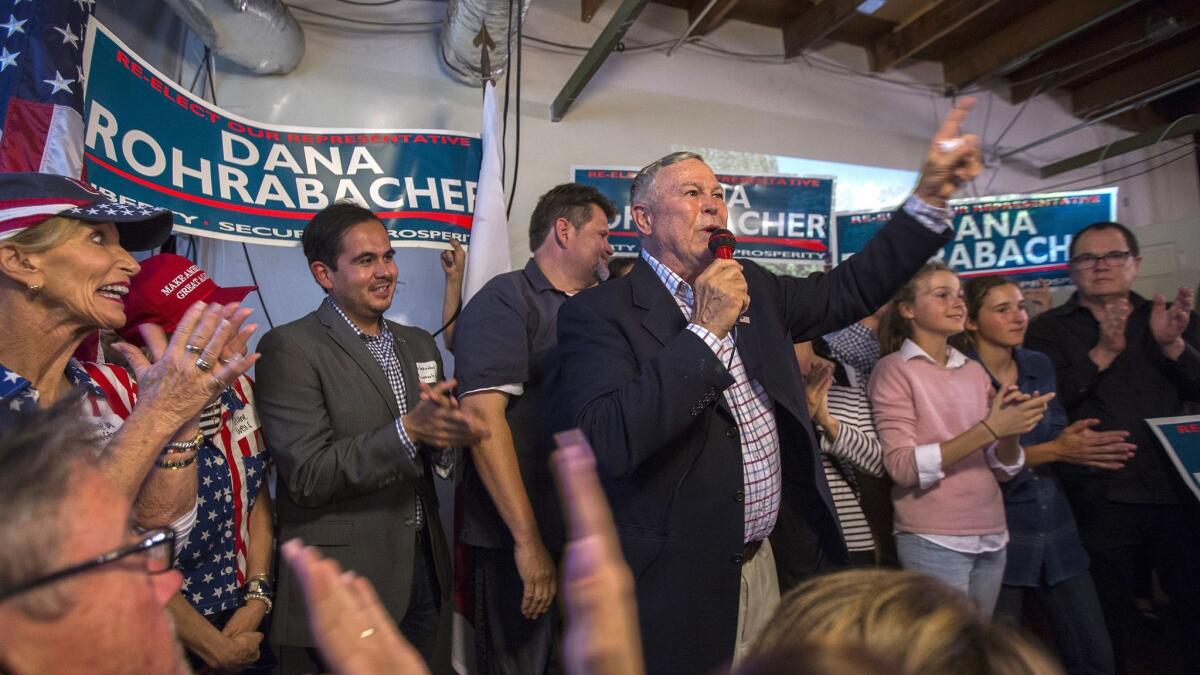Editorial: If Democrats want a blue wave, they need to try voting

- Share via
Voter registration hit historic levels in California this year, with more people registered to vote than at any other time in history. But the numbers were bad for the state’s Republican Party, which marked a new low in May after decades of steady decline. For the first time, more voters were registered as “No Party Preference” than Republican. This erosion no doubt warmed the hearts of Democratic Party operatives hoping for a “blue wave” in the state’s primaries that would roll over the state’s Republican delegation and prepare the political landscape for some serious House flipping in November.
That didn’t happen. Instead, this ever-shrinking political minority scored an outsize success on Tuesday. With just a quarter of the state’s registered voters, Republicans won a spot in the gubernatorial runoff against Gavin Newsom in November and recalled a Democratic state senator, effectively crushing Democrats’ hope of regaining a supermajority in that house — all while their candidates easily finished first in the seven Republican-held congressional districts that Democrats had targeted for flipping. Democrats were lucky they weren’t shut out of the November election in any of those races. It was a real possibility.
How did Republicans pull off such a feat? It’s simple: They voted. Registered Republicans (along with those who may be Republican in spirit, if not party affiliation) simply cast ballots in greater numbers than Democrats and their liberal allies. Turning out voters in greater numbers is the same strategy that Bay Area candidates regularly employ to win more state offices than Southern Californians. Republicans also tended to face fewer challengers from their own party than Democrats, an advantage in the primaries that will not extend to November.
Democrats were lucky they weren’t shut out of the November election. ... It was a real possibility.
We’ll know for sure what happened — who turned out, where and for what — and be able to assign responsibility more precisely when the final tally for California’s 2018 primary election is complete later this month. But preliminary figures from the secretary of state on Wednesday report that less than 22% of eligible voters took part. This figure will likely grow in the coming days as mail-in ballots trickle into county registrar offices and the mess that inadvertently dropped 118,522 Angelenos from the rolls gets sorted out. Under state law, vote-by-mail ballots can arrive up to three days after the election and still count toward the final tally.
Even if the final percentage of registered voters swells to more than 30%, as voting experts predicted, it would be nothing to celebrate — especially when California has been bending over backward to make it easy to vote with recent changes to its election law, automatic registration, early voting centers, provisional ballots and other reforms.
It’s a simple calculation that too many Californians don’t seem to get: If you want to change leadership, you have to take the time to vote.
Follow the Opinion section on Twitter @latimesopinion and Facebook.
More to Read
A cure for the common opinion
Get thought-provoking perspectives with our weekly newsletter.
You may occasionally receive promotional content from the Los Angeles Times.









